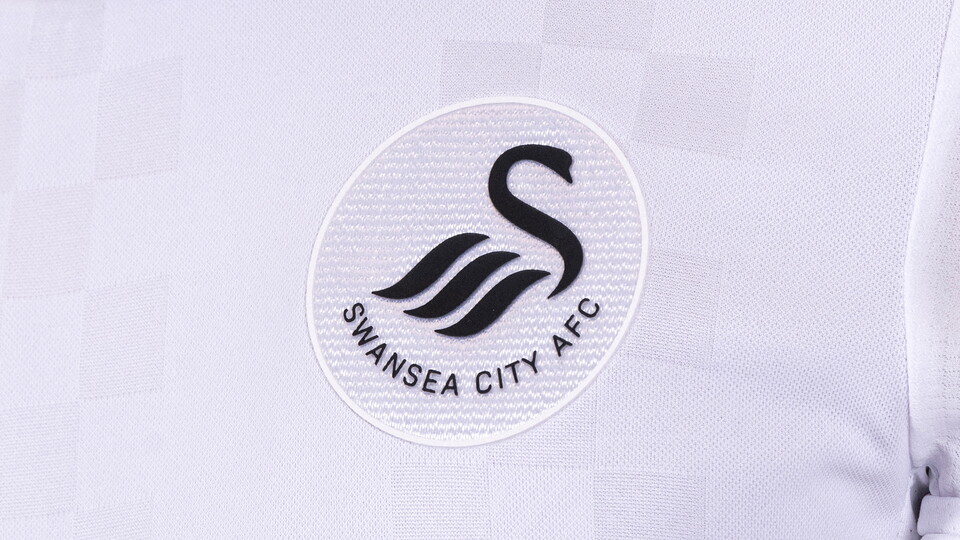Andy's hands-on role at the Swans
Thu, 01/26/2017 - 17:05
He started out in non-league football and has since worked at such stellar events as the Olympics and Wimbledon.
He has turned his hand - or should that be hands - to a range of sports, including athletics, rowing and skeleton racing, working with various champions along the way.
Now Andy Stanbury has brought his expertise to Swansea City, where his task is to ensure players are primed for the Premier League.
Stanbury is the Swans' lead soft tissue therapist. He heads up a team which also includes Adele Callaghan and Matthew Murray and whose job is to work with Paul Clement's players every day in an attempt to improve performances come the weekend.
"When you are talking about an athlete at the highest level, you can make a comparison with a sports car," Stanbury explains.
"You pick up the little things more in a finely-tuned car than you would in a Ford Fiesta. Athletes are just the same.
"Athletes need to deliver every single day to maintain their level or to improve, and to do that their bodies must be in the best possible position to make that happen."
Soft tissue therapy involves the manipulation of the soft tissues of the body - including muscles, tendons and ligaments - and is used to assist with injury treatment and injury prevention, plus recovery from matches or training.
"The body goes through a lot of trauma during a game," Stanbury adds.
"You get a breakdown of tissue. Ice baths, the right nutrition, the right hydration and appropriate sleep are all important to help the players recover, as is what we do.
"Our work is about making sure the players are as finely-tuned as possible."
Stanbury joined the Swans staff last summer having been sought out by head of performance Richard Buchanan.
But while he may be relatively new to the Liberty, he has vast experience in his field.
His first role came back in 2003 at non-league club Woking, where a friend was a player, before his work came to Reading's attention.
Stanbury spent a season as a part-time staff member with the Royals, then went full-time in 2005-06 - the campaign when Steve Coppell's team broke all records as they were promoted to the Premier League.
Among those Stanbury worked with during five happy years at Reading was a promising academy player called Gylfi Sigurdsson.
In 2009, he left for a multi-sport role with the English Institute of Sport based at the University of Bath.
"I worked with British Swimming - I went to the London Olympics with them, which was a great experience," Stanbury explains.
"I was also supporting the British Athletics. Dai Greene is someone I worked with, and I know he is a big Swans fan.
"I also worked with modern pentathlon, England netball and British skeleton. I worked with Amy Williams, who won Olympic gold, and Lizzie Yarnold, who also won gold."
Stanbury has also spent time with British Canoeing and British Rowing at Bisham Abbey, while in recent years he has been part of the medical support team at the Wimbledon Championship.
But for quite a while, he has had an urge to get back into football.
"All the roles I had been doing were part-time, but to be able to embed yourself in a performance environment and have an influence, you need to be in it full-time," he says.
"I knew if the right opportunity in football came up, I would seriously consider it.
"When Rich Buchanan gave me an insight into what he was building here at Swansea, it fitted nicely into what my vision for soft tissue therapy in a performance environment is."
Stanbury believes part of his role is to inspire a "cultural shift" in the way soft tissue therapy is used in football.
In the past, he says, there has been a "rubs and flush culture" - in other words players asking for a massage on any part of the body which feels tight.
In fact there is much more to the work done by Stanbury in his team, who do not simply dish out massages. There are various other types of treatment involved in soft tissue therapy.
"It may be about working on specific things in the gym," he says. "An athlete has to develop and get stronger and in order to get stronger, they have to be able to move well.
"Being able to move well means you need a degree of mobility and flexibility. If an athlete needs to increase strength to improve their sporting performance, our role might not be to make them better footballers, but it is to influence their ability to move better.
"That will give them the opportunity to get stronger and that will then transfer on to the pitch."
Stanbury and Co are busy at the start of week, when their focus is on recovering from the previous game.
Come Thursday and Friday, they are looking ahead to the next fixture, when many players have their own specific routines.
"Some of them are very self-sufficient," Stanbury says. "They may be happy with how they maintain their own recovery as well as their mobility and flexibility, and their own readiness to perform.
"Some just don't like massage, but that's where it's important for us to educate them, to show them that it isn't just massage, there are other things we can do.
"It is not just a massage which is nice to have and makes you feel good. We have to show them that what we do can make a difference to performance."
It helps when the team get a result.
"Players are notorious for superstitions. If some players are treated before a win, they will want that every week because we won," Stanbury says. "That's football. It always makes me laugh!"
Of course, there is much more to it than that.


